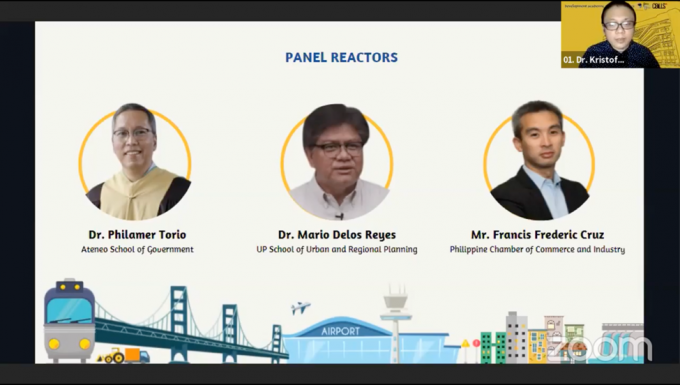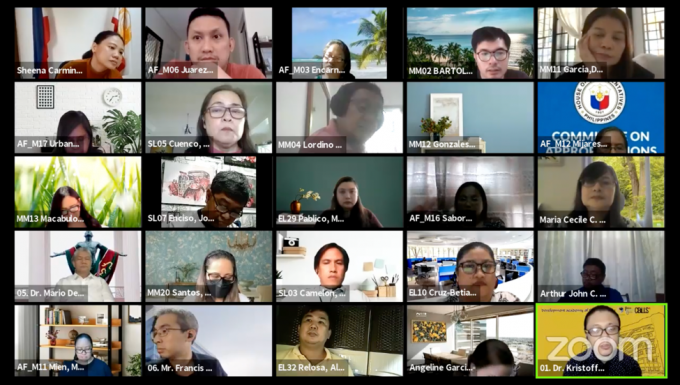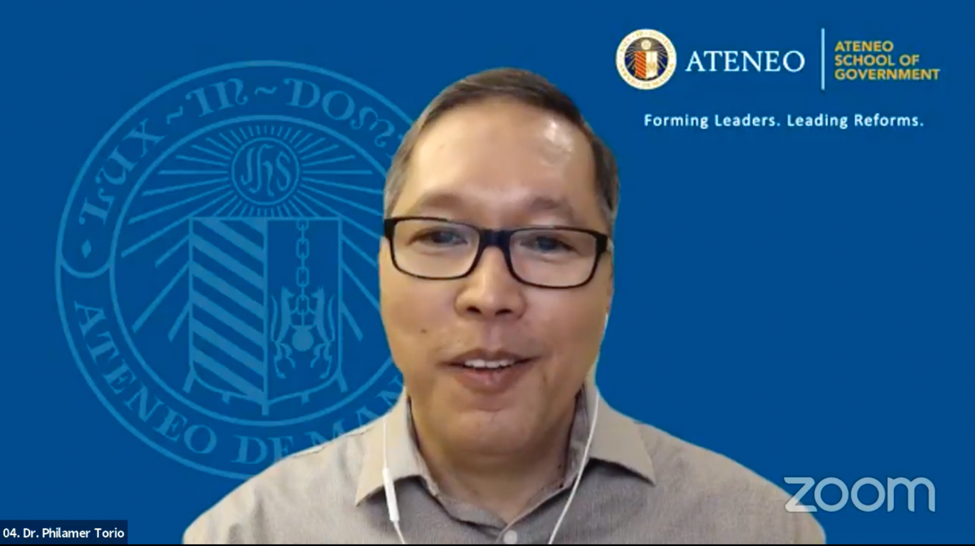ASOG's Dr. Phil Torio counsels in Infrastructure Investment Webinar
14 Jun 2021
Dr. Philamer C. Torio, Ph.D., an Associate Professor of the Ateneo School of Government, served as a Panel Reactor to the webinar of the Development Academy of the Philippines (DAP) Policy Research Office (PRO) entitled Paving the Way: Assessing the Infrastructure Development Agenda in the Philippines.
The webinar was held on June 10, 2021, from 9:00 AM to 12:00 PM via Zoom and Facebook Live. It is the second session of the Thursday Talks Webinar Series. Dr. Kristoffer Berse of the University of the Philippines National College of Public Administration and Governance served as moderator.
The webinar’s main speakers were Department of Public Works and Highways (DPWH) Undersecretary Maria Catalina E. Cabral and National Economic and Development Authority Assistant Secretary Roderick M. Planta. Other panel reactors are Dr. Mario R. Delos Reyes of the University of the Philippines School of Urban and Regional Planning and Mr. Francis Frederic Cruz of the Philippine Chamber of Commerce and Industry joined Dr. Torio as Panel Reactors.
As part of its post-pandemic recovery plan, the Philippine government intends to restart its Build, Build, Build program to grow the economy, create jobs, and reduce poverty. However, Dr. Torio notes that 51 of the 112 flagship projects are still in the preparation and pre-implementation stages. Those projects, worth Php 3.8 trillion, comprise about 81% of the total estimated public infrastructure investment. Given the high level of investment, transforming these investments into actual infrastructure assets is critical to its success.
Aside from exogenous influences, Dr. Torio opines that the low absorptive capacity of the government may be the major contributing factor for the low efficiency in infrastructure investments. Low efficiency translates to poor project appraisal, selection, procurement, monitoring, and regulation. There thus remains a need to strengthen the technical and managerial resources of the government. The same goes for government policies and institutions—especially for big-ticket projects.
Another way of increasing efficiency is to engage private sector participation in infrastructure development. For the redesigned Build, Build, Build program, 22 of the 112 projects will implement a public-private partnership scheme. These PPP projects constitute 33% of the total land infrastructure investment. However, there is still a need to streamline the PPP process and add incentives to make these projects more attractive for private investors, both foreign and local.
On the institutional side, the government must plan for and implement a long-term infrastructure development program to ensure continuity from one administration to the next. House Bill 8151, which intends to institutionalize the Build, Build, Build program up to 2052, may help provide the necessary road map for the infrastructure sector.
Dr. Torio admits that there remains a need to address the bureaucratic red tape for securing licenses, permits, and the rights of way, which are always costly based on project completion. Hopefully, he says, Executive Order 129, which creates the office of the presidential advisor for streamlining government processes, will craft the necessary policies to address the sources of these delays.
Finally, the academe can support the infrastructure development program by partnering with the government to develop the absorptive capacity required for the program’s success. The Ateneo School of Government has partnered with the Bureau of Customs for data analytics and the PPP Center for expanding the knowledge base on public-private partnerships through education, research, and training. Given access to the infrastructure data across all sectors, they can also be partners to the government in carrying out its infrastructure-related research and development to improve planning, programming, and policymaking.


